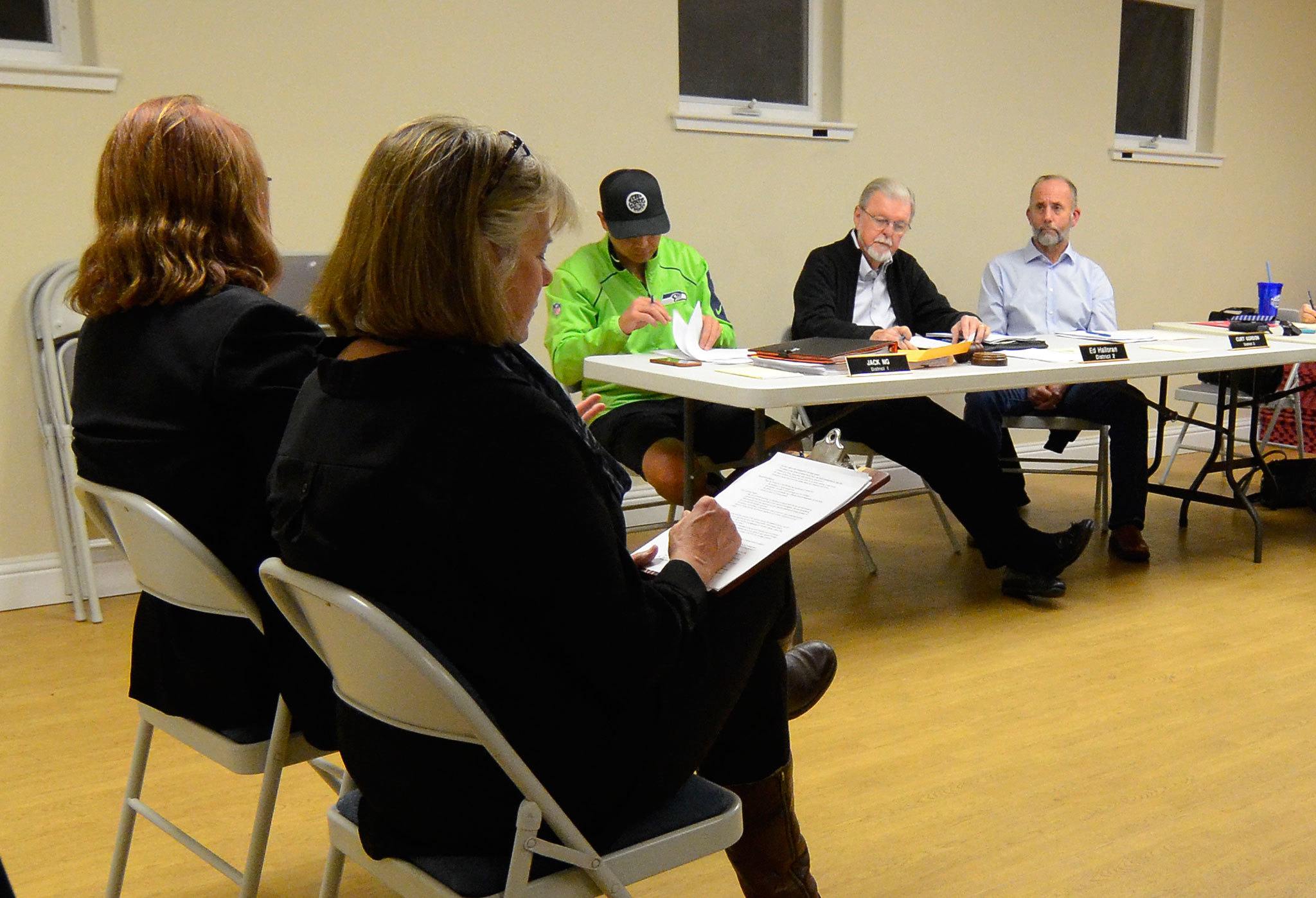A hefty upgrade and potential expansion to a commercial kitchen at the fairgrounds could be the first major improvement made to the facility under port ownership.
The investment, which could hit $150,000 according to one early proposal, would add new equipment, dry and cold storage areas, and additional space to the kitchen located in the Coffman Building. The idea is to make the kitchen more appealing to a wider variety of users and better fulfill the port’s underlying objective for economic development.
“I’d love to work on that building anyway, so this would be a wonderful place to start,” Port of South Whidbey Commissioner Curt Gordon said.
The proposal is still in its infancy, being pitched to port commissioners for the first time during a board meeting earlier this month by Goosefoot leaders. The non-profit organization has spent the past year focusing on and examining ways to support Whidbey’s “food system” and incubate new businesses. Working from a strategic plan adopted in 2014, it’s accomplished goals such as interviewing farmers and researching a a food hub to holding a series of relevant workshops and raising funds for the South Whidbey School District’s garden program.
One of Goosefoot’s primary objectives was to research possible locations for a commercial kitchen, and the one in the Coffman Building emerged as a top pick. Organization leaders believe it’s the right spot but that it requires serious upgrades to make it viable.
In a presentation to the board on Nov. 8, Goosefoot Executive Director Sandra Whiting and Director of Programs Marian Myszkowski said the current facility, which was renovated within the past 10 years, lacks the equipment and space that needed to help with a wider market of users, specifically “value added” food businesses — those that take a raw commodities and make them into high-end quality products, such as flour into baked goods or strawberries into jam.
Funding was proposed as a partnership, with Goosefoot pitching $75,000 for equipment, from commercial grade mixers and convection ovens to cooling racks with trays, while the port would fund an expansion to make room for adequate cold and dry storage areas, essentials for value added producers. The extra square footage will also allow more than one food enterprise to use the kitchen at one time.
Goosefoot performed an online survey in August, identifying nine people who would use the new kitchen immediately and eight others who would use it within two years.
The proposal also suggested the port manage the new kitchen and its users, possibly hiring a part time worker. Whiting and Myszkowski also laid out an aggressive plan to fund, remodel and open the facility by as soon as March but no later than May.
“So, there’s wiggle room there,” Myszkowski joked while addressing the timeline.
Port commissioners seemed interested in the project with each expressing various levels of support. They all made it clear, however, that they weren’t interested in managing an improved kitchen; the district’s role is to create the infrastructure needed for economic development, not go into or operate a business.
“That’s the way port district’s work… they don’t get into specific enterprises,” Gordon said.
He suggested an alternative where the port would finance upgrades and Goosefoot manage the facility. Commissioner Jack Ng also voiced support for such a proposal, though neither committed to specific amounts.
Commissioner Ed Halloran also asked if the nonprofit had completed funding models that would support the part time work, and whether they knew exactly how much additional space is needed.
Myszkowski said projected income should cover the tab for the part-time worker, but under a rent-free model. She said commercial kitchens are “difficult ventures” and often require partnerships to make them work.
“It’s pretty revenue neutral,” she said.
Halloran said the port would need a more specific proposal, a plan containing the financial details and space requirements, before the board could make any real decisions.
“If we had a copy of that, then we could have a workshop and discuss this ourselves if we really want to do it,” he said.
Gordon and Ng agreed that more discussion was required, but both were optimistic a deal could be struck.
“I love this idea,” Ng said. “Let’s make it work.”
Myszkowski said in a later interview that the board’s reluctance to manage the kitchen directly was no “deal breaker” and is hopeful that an agreement can be struck. There are some things, however, that he organization may not bend on.
“One thing goosefoot feels very strongly about is the size of the kitchen now isn’t going to be big enough,” she said.
She acknowledged it’s a project with lots of “moving pieces” and more discussion is needed.



